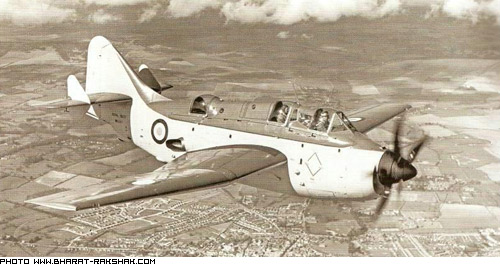Gannet
Summary
| Category | Military Special Mission Aircraft |
| Origin country | 🇬🇧 United Kingdom |
| Manufacturer | Fairey |
| First flight | 19 September 1949 |
| Year introduced | 1953 |
| Number produced | 303 units |
| Average unit price | $2 million |
Description
According to aviation historian H. A. Taylor, the Gannet's origins can be traced back to 1935 with the Fairey Prince. Formal design work started in response to requirement GR.17/45 in 1945, where the Admiralty sought a new twin-seat aircraft for anti-submarine warfare (ASW) and strike missions. Fairey's submission, the Type Q or Fairey 17, competed with Blackburn Aircraft's B-54 / B-88. Fairey explored using a single Rolls-Royce Tweed turboprop but instead approached Armstrong Siddeley to develop a new engine based on the Mamba turboprop: the Double Mamba, comprising two Mamba engines side-by-side, sharing a common gearbox. This arrangement, with coaxial contra-rotating propellers, was selected. Fairey was awarded a contract to produce two prototypes on 12 August 1946, while Blackburn also received a contract. On 19 September 1949, the prototype performed its maiden flight from Aldermaston. Early test flights encountered flight control difficulties, such as sharp trim changes. On 19 June 1950, the prototype conducted the first deck landing by a turboprop aircraft on HMS Illustrious. On 13 March 1951, Fairey received an initial order for 100 Gannet AS.1s. In 1953, quantity production of the type commenced and the first production Gannet performed its initial flight on 9 June 1953, from RAF Northolt.
The Fairey Gannet is a carrier-borne turboprop-powered aircraft typically operated by a crew of three, comprising a pilot and two aerial observers. The pilot was seated directly above the aircraft's Double Mamba engine and behind the gearbox and contrarotating propellers, a position that conferred a favourable view over the nose for carrier operations. The first observer was seated underneath a separate canopy directly aft of the pilot's position. On the production aircraft, a second observer was also present in their own cockpit located over the wing trailing edge. This position disturbed the airflow over the horizontal stabiliser, necessitating the addition of small finlets on either side. The wing of the Gannet folded in two places, forming a distinctive Z-shape on each side, to minimise its space requirements while stowed onboard aircraft carriers. The aircraft also featured a sizable internal bomb bay within the fuselage, and the primary search apparatus was the air-to-surface-vessel (ASV) radar, which made use of a retractable radome positioned underneath the rear fuselage just to the aft of the bomb bay.
The Gannet featured a sizable internal bomb bay, being the first British aircraft in FAA service capable of storing all its munitions (other than rockets) internally. This bay could accommodate depth charges, sonobouys, homing torpedoes, bombs, markers, and mines. Additionally, hard points beneath the outer wings allowed for carrying up to 16 Mk.8 or 24 Mk.5 rocket projectiles, or alternatively, 100-gallon external fuel tanks. The aircraft had a capacity to carry up to 2,000 lb of varied ordnance to fulfill its anti-submarine and strike roles.
Deliveries of the Gannet AS.1 formally began in April 1954, with the 826 NAS becoming the first operational Gannet squadron of the Royal Navy on January 17, 1955. The squadron embarked on HMS Eagle during its initial at-sea deployment in the Mediterranean. The Royal Australian Navy (RAN) also established its first two Gannet squadrons that same year, ultimately operating 33 Gannet AS.1s and three T.2 trainers primarily from HMAS Melbourne and HMAS Albatross. By the mid-1960s, the Royal Navy's Gannet AS.1 and AS.4 models were superseded by Westland Whirlwind HAS.7 helicopters in the ASW role, although FAA Gannets continued in service as ECM.6 electronic countermeasures aircraft, while some AS.4s were converted to COD.4s for carrier onboard delivery. Starting in May 1958, West Germany's Navy operated 15 Gannet AS.4s and a single T.5 as the ASW squadron of Marinefliegergeschwader 2 before being replaced by Breguet Br.1150 Atlantics in 1966. In January 1959, the Indonesian Navy ordered 18 Gannets and used several as ground-based trainers.
Main Variants:
-
Gannet AS.1: The initial production anti-submarine warfare variant, equipped with air-to-surface-vessel (ASV) radar and capable of carrying a range of munitions including depth charges and torpedoes.
-
Gannet T.2: A dedicated trainer variant with dual controls in the forward cockpits and a retractable periscope for the second cockpit, but lacking the radar apparatus and scanner equipment.
-
Gannet AS.4: An improved ASW model featuring an up-rated Double Mamba engine for enhanced performance.
-
Gannet AS.6: Refurbished ASW models with new electronics and radar systems to improve their operational capabilities.
-
Gannet AEW.3: A carrier-based airborne early warning platform with a redesigned airframe to accommodate a large radome, increased tailfin area, and lengthened undercarriage.
Technical specifications
| Version: Gannet AEW.3 | |
|---|---|
| Crew | 1 pilot + 2 radar operators |
| Operational range | 1,127 km (700 mi) |
| Maximum speed | 417 km/h (259 mph) |
| Wing area | 44.9 m² (483.3 sqft) |
| Wingspan | 16.6 m (54.5 ft) |
| Height | 5.1 m (16.8 ft) |
| Length | 13.4 m (44.0 ft) |
| Service ceiling | 7,700 m (25,262 ft) |
| Empty weight | 7,421 kg (16,360 lbs) |
| Max. takeoff weight | 11,340 kg (25,000 lbs) |
| Powerplant | 1 x turboprop Armstrong Siddeley Double Mamba 102 delivering 2890 kW each |
Current operating countries
All operators

